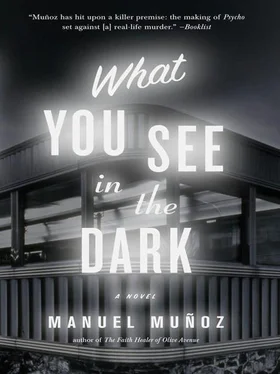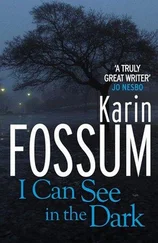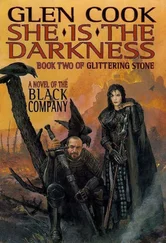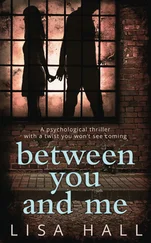There, on page 3, is a picture of the bowling alley over near Chester Avenue, a police officer standing in front. There is the girl’s name in the text. There is Dan Watson’s. Page 1 is ink-smeared from the rain and nearly impossible to read, but it is clear something terrible has happened. She was twenty-three.
There is what you see and what you make of it, what you know for sure and what you have to experience, what others tell you and what gets confirmed.
Phone calls ricochet all around town. The rain keeps most people from venturing out, or else speculation would be the subject at every bar, every coffee shop, every diner and café. She lived in the apartment above the bowling alley and was a quiet girl, according to the landlord’s account in the newspaper. On the night the rainstorm began, said some who claimed to have been in the cantina the very night she was killed, the two of them had a terrible fight. Others said that never happened, that the couple had been seen at the movies. The stairwell up to her apartment had a side wall smeared in blood, someone said. The newspaper reported she had been beaten to death. You can kill someone with your bare hands. A man can kill a woman that way. Even a sweet, earnest boy is capable of that, if he thinks about it, if he recognizes his power, his weight, his thrust, his fists coming down. On page 8 of the paper, the advertisement for Las Cuatro Copas still runs, La Reina with her mouth open.
She had been stealing money. She had been pregnant with his child. She had been caught with another man. The landlord refuses to rent the apartment. He cannot get the blood off the wall.
There is what you see and what you make of it: You know she stole those boots from the store’s inventory. You know for sure. You can confirm it by the totals coming up short in the ledger. But you keep that to yourself.
Dan Watson disappears, and by the time the newspaper reports this, it is old news, if news at all. The newspaper cannot say anything except that the situation is under investigation. The rain clears up and patrons in the café discuss it with the waitresses when Dan’s mother is not on shift. They scoff at the paper, calling it a situation and not a murder. Someone calls the paper and admonishes them for having run the cantina’s advertisement. But there are still some who don’t know that the girl and La Reina are one and the same.
You can hear people discuss it as December goes on, but no one goes into the uglier details. Was there really blood on the wall? At the drive-in movie, the beautiful woman was strangled to death, but she slumped over as if in a sudden sleep. Music thrummed ominously. At the drive-in movie, boys and men undid bras and pulled off panties, eager to get to the wet warmth underneath the skirts. Maybe not every girl let them. There was that one who moaned hard, enjoying it, and the laughter from people sitting on the hoods of their cars. But not every girl was like that. Not every girl allowed that. Maybe Dan never did that with her at the drive-in. The landlord said she was a nice girl. You could see how she sang, how she chose songs that were always about love, Dan stepping out of the record shop with brown-papered packages. But then again, all the songs nowadays were about love, whether you lost it or found it or gave it away.
At the café, no one talks about it when Dan’s mother is on shift. No one can imagine what it is like to be the mother of a man like that. All the waitresses who flirted with him can only talk about remembering him when he was a little, little boy.
The rain lets up and is promptly replaced by the fog. There are Mexican men at the corner grocery store near the girl’s apartment, waiting every morning for fieldwork. They sit watching people driving by slowly to get a look at the splintered green door that opens to that stairwell, or at the dark window of the girl’s apartment. They watch people actually go up to the door and try the knob. Her face was beaten so badly, goes the story around town, that there was a closed casket. Others say she had no funeral at all, that she was just buried in what they call the public side of the city cemetery because she didn’t have any people in Bakersfield.
She was twenty-three. The cemetery put a little marker about the size of a fist over in a corner lot — teresa garza — because city regulations mandate that no graves go unmarked.
In late December, Dan Watson is nowhere to be found. Later, the police detain one of the Mexican men from across the street, that bunch of men who sit around the corner grocery waiting for work. That man, people say, was another boyfriend, but by this point, no one really knows the story anymore. The rest of the Mexican workers scatter for days, not returning, but it doesn’t matter. By January, work is scarce. All of Bakersfield has to tighten its wallet as the thick of winter settles in. Hardly anyone comes to the shoe store, even out of curiosity, and you rest your elbows on the counter and count the days until spring. The Mexican man is deported, but the newspaper never says why — that’s something you hear only on the street. All winter long, the splintered green door remains locked, a strange brightness in the dull of the January fog.
The Actress was set to arrive in Bakersfield in the morning. She would be driven from Los Angeles, picked up from the studio at 6 a.m. sharp in a black sedan, and carried over the mountains into the city of Bakersfield to meet with the Director. She was a dedicated actress, script in hand as the sedan wound its way out of the quiet Los Angeles morning, a croissant and a carton of juice to sate her appetite. The driver respected her need for silence, her head bent over the script. She fought the nausea of reading against the car’s steady thrum.
The Director had told her explicitly not to worry much about the entire script: they were shooting only two exterior shots, coming quietly into Bakersfield without a lot of fanfare, and the rest would be filmed at a Los Angeles studio. The Actress already knew her lines, but it never hurt to read again or to review scenes that had nothing to do with her. The exteriors were to be shot on the outskirts of the city, somewhere along Highway 99: A woman is driving a car on a road, all alone. The woman has no one to talk to, hence the Actress had no real lines to rehearse. But the Actress knew, at the very least, that her facial expressions would have to match the mood of the final edit, would have to match what she saw in the parentheticals scattered all over the script: there would be voice-overs, something else telling the story besides her own face.
She put down the script and watched the slope of the hills roll by in the October morning light. Excursions like these — trips to actual locations, away from the studio lot, all in the name of authenticity — made her wonder about the fuss, whether it was much of a role at all. The Actress had two children and a husband at home. Luckily, most of this film was scheduled to shoot in Los Angeles; it was becoming too difficult to get away from the city for work. The roles had to be studio-shot for her to be able to accept them, but these days that meant only the smaller pictures or television. Color was splashing across enormous screens and that meant directors wanted to go out to the Painted Desert, to the skyscrapers of New York City, even Japan — the real thing, not a backdrop, had to appear on the screen. At first, she believed it to be nothing more than the directors and the studios wanting to show off their enormous budgets, but the films coming over from Europe flashed with a bold realism that signaled a readiness to deepen the craft. Even the actresses appeared as if they were hauled in from the street, frighteningly believable and fully invested in their roles, not a hint of studio training in their performances. Maybe they were not even actresses at all, but authentics: a housewife, a drunk, a gold digger, a prostitute.
Читать дальше












